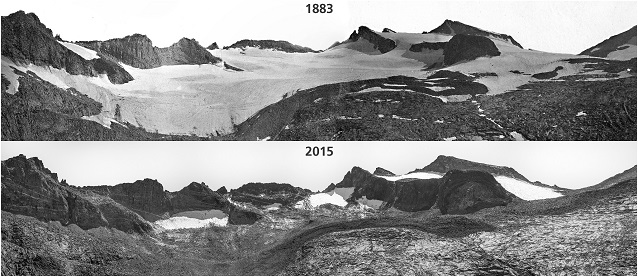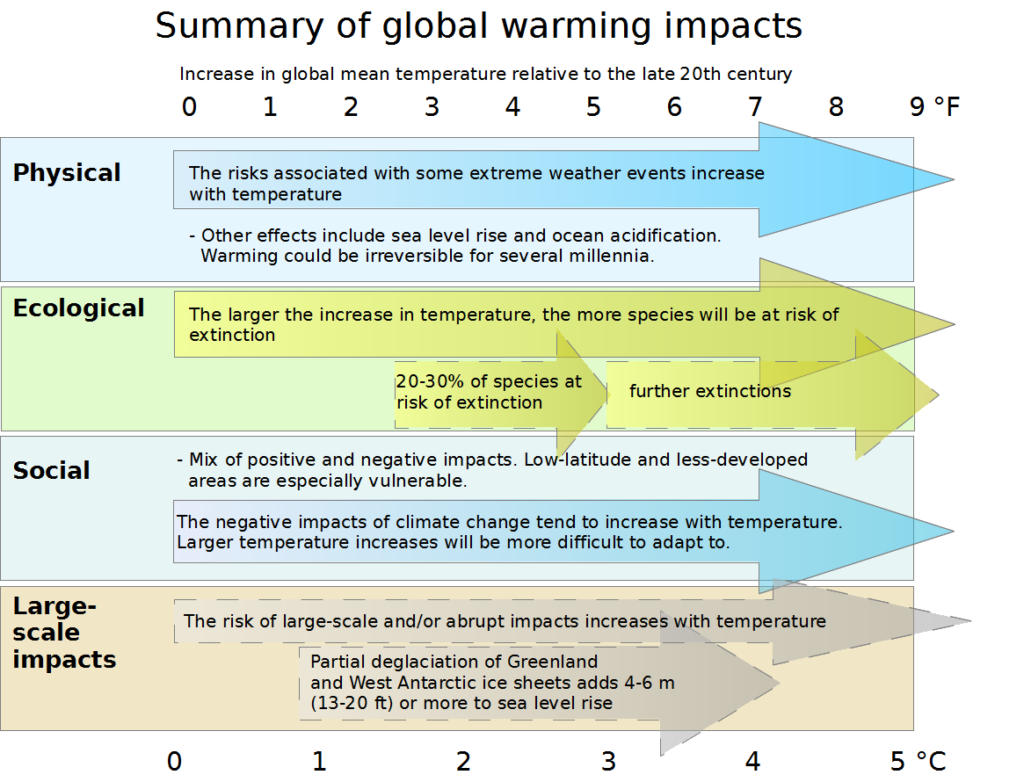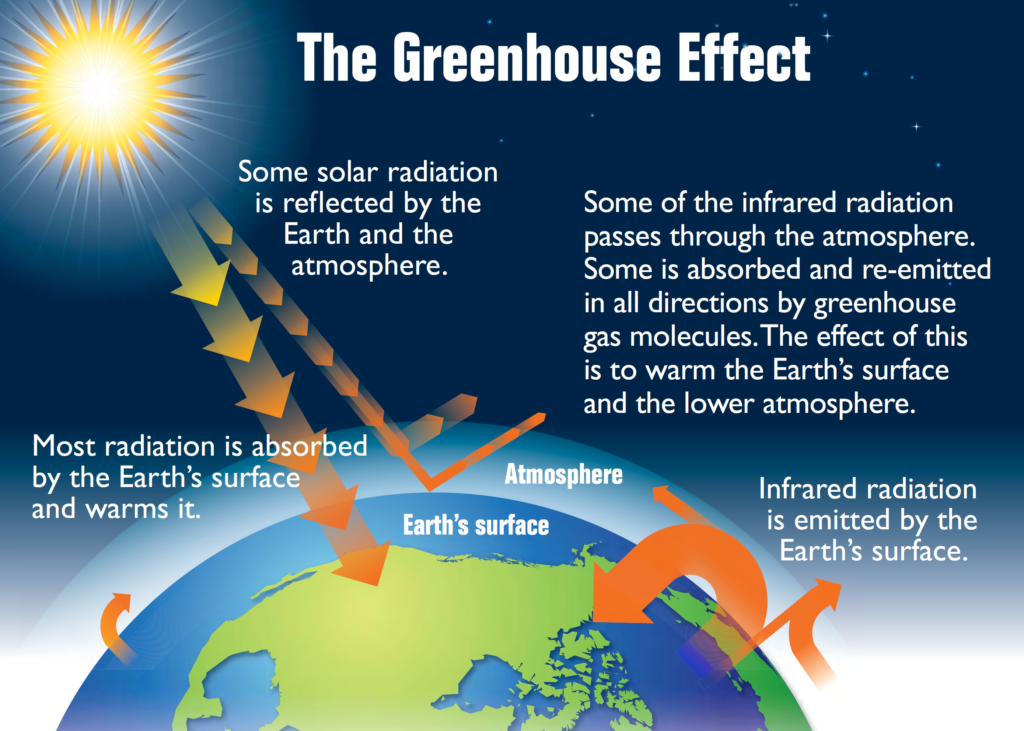Earlier this year, the U.S. government released the Climate Science Special Report. This document describes the state of the Earth’s climate, specifically focusing on the U.S. If you are someone who is interested in environmental science or policy, you may have thought about reading it. But where to start? The report contains fifteen chapters and four additional appendices, so reading it may seem daunting. We published this summary of the report to provide a brief introduction to climate change, and to provide a starting point for anyone who wants to learn more.

What is Climate Change?
“Climate change” is a phrase that has become ubiquitous throughout many aspects of American and global society, but what exactly is climate change?
Like weather, climate takes into account temperature, precipitation, humidity, and wind patterns. However, while weather refers to the status of these factors on any given day, climate describes the average weather for a location over a long period of time. We can consider a climate for a specific place (for example, the Caribbean Islands have a warm, humid climate), or we can consider all of Earth’s climate systems together, which is known as the global climate.
Depending on where you live, you may have seen how weather can change from day to day. It may be sunny one day, but cool and rainy the next. Climate change differs from changes in weather because it describes long-term changes in average weather. For example, a place with a changing climate may be traditionally warm and sunny, but over many years, become cooler and wetter. While weather may fluctuate from day to day, climate change is due to gradual changes that occur over long periods of time. Climate is viewed through an historical lense, comparing changes over many years. Though we may not notice the climate changing on a daily basis, it can have drastic effects on our everyday lives. It can impact food production, world health, and prevalence of natural disasters.

What Causes Climate Change?
The major factor determining the Earth’s climate is radiative balance. Radiation is energy transmitted into and out of the Earth’s atmosphere, surface, and oceans. Incoming radiation most often comes from light and heat energy from the Sun. Earth can lose energy in several ways. It can reflect a portion of the Sun’s radiation back into space. It can also absorb the Sun’s energy, causing the planet to heat up and reflect low-energy infrared radiation back into the atmosphere. The amount of incoming and outgoing radiation determines the characteristics of climate, such as temperature, humidity, wind, and precipitation. When the balance of incoming and outgoing radiation changes, the climate also changes.

There are some natural factors that can influence climate. The main ones are volcanic eruptions and the El Niño Effect. Volcanic eruptions emit clouds of particles that block the Sun’s radiation from reaching the Earth, changing the planet’s radiative balance and causing the planet to cool. The El Niño Effect is a natural increase in ocean temperature in the Pacific Ocean that leads to other meteorological effects. The increase in ocean temperature off the coast of South America leads to higher rates of evaporation, which can cause wind patterns to shift, influencing weather patterns worldwide. Together, these factors influence climate, so when they differ from the norm, they can contribute to climate change.
It is true that climate change can occur naturally and it is expected to happen slowly over long periods of time. In some cases, the climate can change for a few months or years (such as in the case of a volcanic eruption), but the effects of these events are not long-lasting. However, since the Industrial Era, the factor contributing most to climate change has been an anthropogenic driver, meaning one that is being caused by human activity. The primary cause of climate change since the Industrial Era has been the presence of greenhouse gases in the atmosphere. The main greenhouse gases are carbon dioxide (CO2), methane (CH4), and nitrous oxide (N2O). These gases are problematic because they remain in the Earth’s atmosphere for a long time after they are released. They trap much of Earth’s outgoing radiation, leading to an imbalance of incoming and outgoing radiation energy. Because the Earth’s atmosphere is holding on to all that energy while still receiving irradiation from the Sun, the planet heats up. This is called the greenhouse effect, because it is similar to what happens in a greenhouse—the Sun’s energy can get in, but the heat cannot get out. The greenhouse effect has intensified due to the greenhouse gases that are released during our modern industrial processes. This has caused the Earth’s climate to begin to change.
Who contributed to the Climate Science Special Report?
The report was written by members of the American scientific community, including (but not limited to) the National Science Foundation, the National Aeronautics and Space Administration (NASA), the US Army Corps of Engineers, and multiple universities and national labs. They analyzed data from articles in peer reviewed scientific journals—that is, other scientists read these articles before they were even published to check for questionable experiments, data, or conclusions—as well as government reports and statistics and other scientific assessments. The authors provided links to each source in citation sections at the end of each chapter. They combined everything they learned into this one comprehensive document, the Climate Science Special Report.
What can we learn from this report?
First of all, the report reveals that the Earth is getting warmer. The average global surface temperature has increased about 1.8°F (1.0°C) since 1901. This may seem like a small change, but this increase in temperature is enough to affect the global climate. Sea levels have risen about eight inches since 1900, which has led to increased flooding in coastal cities. Weather patterns have changed, with increased rainfall and heatwaves. While the increased rainfall has been observed primarily in the Northeastern U.S., the western part of the U.S. has experienced an increase in forest fires, such as those that have devastated California this year. Such changes in weather patterns can be dangerous for those who live in those areas. They can even damage infrastructure and affect agriculture, which impacts public health and food production. These changes mainly result from greenhouse gases, namely CO2, that humans have emitted into the atmosphere.
Where can I go to read the report myself?
You can find a link to the main page of the report here. There is also an Executive Summary, which was written for non-scientists. While the rest of the report contains some technical language, it is generally accessible, and contains visuals to help readers understand the data. If you are interested in gaining a better understanding of Earth’s climate and how it’s changing, we encourage you to take a look at the Climate Science Special Report to learn more.
Peer edited by Amanda Tapia and Joanna Warren.
Follow us on social media and never miss an article: